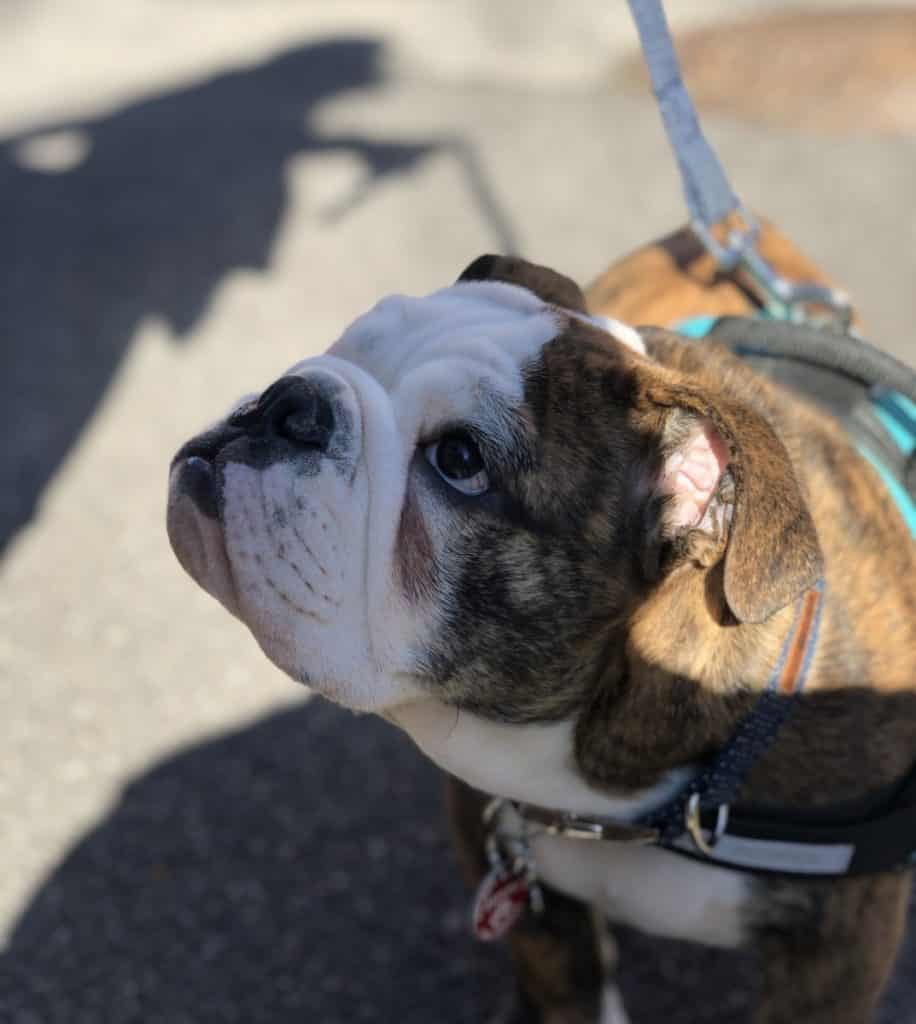Many dog owners take their dogs out between two to four times a day, probably when it’s most convenient to whatever else they have going on during the day. However, do you know when the best time of the day is to walk your dog? And how many times during the day should you take your dog out?
What is the best time of day to walk your dog?
The best times of day to take your dog out for a walk are mornings and evenings. Taking your dog out during the cooler times of the day can help in preventing your dog from getting heatstroke. The mornings and evenings are also convenient since most people can walk their dogs before and after work.
The mornings are really the best time to get in that walk. It’s usually convenient for most pet owners, since they can spend some quality time with their pup before they head to work. Sure, you might have to get up a bit earlier than you’d maybe like to, but once you’re up, you get to hang out with your best bud – the best way to wake up! It’s usually quieter in the mornings too and less crowded, so it can be quite an enjoyable time of day to spend with your pooch.

How many times should you walk your dog in a day?
Generally speaking, we recommend you take your dog out between two to four times a day, with each walk lasting for at least 15 minutes. Some factors to keep in mind when deciding when or how many times to take your dog out:
• Breed of the dog: The breed of the dog is an important factor as to how many times you need to walk your dog, as well as how much time should be spent at each outing. Some breeds generally require a lot of activity, so four 15-minute walks might not be enough to keep them active.
• Weather: Where you live and the time of year are also important factors of the frequency of your dog walks. If you live somewhere that gets particularly hot in the summer or really cold in the winter, you might be taking shorter walks. Make sure your dog is protected during these harsh times – if it’s cold out, make sure he or she has a coat and booties, and if it’s hot, make sure you have plenty of water available (check out this post on how to make sure your dog doesn’t get heat stroke). And while it sucks to be outside during these times, don’t compromise your dog’s need for activity and exercise for the comfort of your home!
• Health: The health of your dog is also important to keep in mind, and while exercise is good for them, if they are sick or recovering from something, it’s probably best to let them get some rest. Don’t overdo any activities and if you see any signs of your dog panting excessively, it might be time to call it quits and head home. But, you should still take him or her out for the minimum four walks he or she needs.
So, while under normal circumstances two to four times a day (15 minutes each, at the very least) is the perfect frequency for walking your dogs, while keeping the above factors in mind.
And if you’re not sure and you own a bulldog, well, they will usually let you know when they’re done walking…
What’s the best time of day to walk your dog when he/she is a puppy, adolescent, or an older adult?
1) Puppy: Puppies have small bladders so you will need to take them out quite frequently, until they are toilet-trained. If there have not received all their vaccinations yet, it is best to avoid staying outside longer than is necessary, to ensure that they don’t catch any infections. Once they are about six months old, they will be better trained and have better control of their bladders, so you can reduce the number of toilet trips.
2) Adolescents: When they’re adolescents, they will be more mature and better trained (hopefully!), so you can start having a routine for their walks. This is also the age when they’ll have the most energy, so they might require longer walks to expend that pent up energy.
3) Old: When your dog starts to get a bit older, you’ll have to be more patient with them, and might have to reduce the length of their walks. You should also start to be more careful about when you take them out, and avoid going out when the weather might be too warm or cold for them.
What’s the best time of day to walk your dog during the fall, winter, spring & summer?
Certain breeds of dogs are pretty sensitive to the weather and temperature, so, you might have to change the time and schedule of when you take your dog out, depending on the season.
- Fall and Winter months: Depending on where you are, this is when it might start to get cold and you might begin to lose some precious day light hours. This is why it’s best to walk your dog in the late morning and early evenings, when the sun is still out and you can enjoy the precious few hours of sunlight! Depending on where you live, you might have to dress up your dog in a coat or other covering to protect him or her from the cold, and possibly wet, conditions. Booties might also come in handy, especially if you live in an area that gets snow – booties not only help to keep their paws warm, but also protects their paws from the salt that might be present on the streets.
- Spring and Summer months: As it starts to get warmer, you can begin to take your dog out earlier in the mornings and even later in the evenings. Switching to earlier morning and later evening walks is important in the summer months, especially if you live in a climate that gets quite warm in the summer. It’s best to take your dog out at these times to prevent them from suffering from heat stroke or overheating. Make sure you carry plenty of water with you, and consider shorter, more frequent walks, rather than longer walks, if it’s too hot. Some signs that your dog might be overheating, include:
• Loud and excessive panting
• Vomiting
• Bright red tongue
• Thick saliva
• Increased heart rate
If you notice any of these, you must contact your vet right away. You have to ensure that you limit the walking sessions in the summer to just 10 minutes to 15 minutes, depending on where you live.
How long and far should you walk your dog, based on their age:
1) Young puppy:
When you’re taking a smaller dog or puppy out, the sessions will not last for more than 15 minutes. Typically, a dog covers around half a mile in that time.
2) Adolescent: Adolescent dogs can cover about one mile in 30 minutes, and that’s generally a good amount for a walk. Depending on the breed, they might need to expend more energy and run around more, so you might be taking them for 30-minute to hour-long walks.
3) Adults: As dogs get older, they’ll start to lose their energy, and will require shorter walks. Again, this depends on the breed and the general health of your dog, but at this stage, 15-30 minute walks are sufficient.
4) Brachycephalic (because bulldogs are our favorite!): Brachycephalic breeds are not that active, and because of their breathing struggles, you don’t want them to exert too much energy. You can keep your walks to about a mile at a time.
Should you be consistent and walk your dog at the same time every day?
Having some kind of general consistency is good for your dog and he or she will know when they can expect to be outside. You don’t have to stick to this schedule to a tee, and as you can see from above, you might make changes depending on the time of year and how old your dog is. But having a rough schedule will be convenient for you and something your dog will get used to.
Best tips for walking your dog for health and wellness:
Whether you’re taking your English bulldog or your Labrador out for a walk, here are a few tips to keep in mind:
- Do not pull hard on the leash: It’s natural – your dog will sniff something in the air that will get him excited and suddenly you’re being swept away. Or he insists on walking in one direction, when you really need to be heading the opposite way. In these instances, it’s okay to be a bit tough with the leash and pull on it to direct your dog in the right direction. However, be careful when you do this, and ensure that you don’t pull too hard, which might hurt them. At the end of the day, you’re the alpha dog in this relationship, and you do need to show him or her whose boss every now and again.
- Let your dog socialize with other dogs: Walks are a great time to socialize your dog with other dogs and humans. Starting this from a young age will reduce aggressive tendencies and also nip any possessive tendencies in the bud. Be careful during the first few meetings, and when this is new for your pup, as you might not know how he or she will react, and you don’t want them or the other dogs to get hurt.
- Let your dog sniff around: Dogs get to know their surroundings by their noses, so don’t discourage that curiosity. It will help them learn and familiarize themselves with their home and neighborhood.
We hope that this guide gives you some tips on when the best time to walk your dog is and how those walks should last. Each breed is different, and you have to see what works for you, but hopefully this provides a good starting point!
